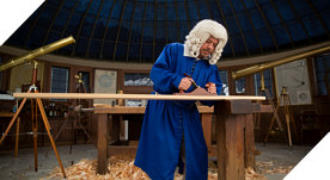
© Special Astrophysical Observatory of the Russian Academy of Sciences
Overview
We utilize our proprietary DECH software package to process FFOREST data. Unlike many other astronomical software packages and pipelines, DECH is designed for the Microsoft Windows operating system. However, this limitation can be circumvented using Windows emulators, allowing DECH to function seamlessly on Linux and Mac OS platforms. The DECH package was developed under the philosophy that "an astronomer creates software for fellow astronomers" resulting in a user-friendly interface. For example, the headache command-line usage is limited to the preprocessing stage of astronomical images, which occurs before spectrum extraction. The extraction and subsequent analysis of spectra are performed in a "desktop" mode, where all necessary tools are consolidated in one or two comprehensive programs, minimizing the need for command-line interaction.
Unlike
fully
automated
processing
programs
often
referred
to
as
"pipelines,"
we
have
moved
away
from
the
"black
box"
approach
that
often
keeps
all
intermediate
data
beyond
the
user's
control.
DECH
facilitates
every
step
of
processing
and
analyzing
spectral
data,
from
image
preprocessing
and
spectra
extraction
(including
those
with
a
tilted
slit)
to
wavelength
calibration
using
a
two-dimensional
polynomial,
continuum
normalization
(either
manual
or
automatic),
the
assessment
of
equivalent
widths
and
radial
velocities
through
various
methods,
as
well
as
cross-correlation
analysis,
among
others, etc
The
DECH
software
provides
highly
accurate
measurements
of
radial
velocities,
including
those
necessary for the detection of exoplanets.

Preprocessing
Preliminary processing of spectral images includes the following procedures: (i) Obtaining the superbias — the mean image of a group of images with the lack of exposition ( bias) . To remove traces of cosmic rays hits from individual images, a median filter is used beforehand; (ii) Obtaining the superflat — the arithmetic mean of a group of spectral flat-field images. Similarly, a median filter is used beforehand to clean individual images of cosmic ray traces before averaging; (iii) Subtracting the superbias from all other images, including the superflat . Before performing averaging procedures, it is recommended to preliminarily check the uniformity of the initial data - it must be approximately the same level of signal in the group images. For this, it is convenient to use cross-sectional slices of the images - i.e. select a column or a row across the image which is perpendicular to the main dispersion. An important note regarding the flat-field correction: the correction of spectra of astronomical objects using a flat-field spectrum can be performed in two ways: 1. Flat-field correction (flat-fielding) is performed during the image processing stage, meaning that the objects images are divided by a normalized image of the super-flat ; 2. Flat-field correction (flat-fielding) is performed after spectral extraction by dividing the extracted spectra of objects by the extracted super-flat spectrum. For slit spectrographs, the first method should be used. This is due to the variable signal distribution across the slit height from object to object. A typical example is UVES (Paranal Observatory) or MIKE (Las Campanas Observatory) spectrographs, where the slit height is significant and, as a result, the width and/or position of spectral orders in direction perpendicular to the dispersion direction vary depending on the brightness of the object, sky image quality, guiding accuracy, and other factors. For fiber-fed spectrographs (including FFOREST), the second method is preferable. To account for the flat-field correction using the first method (before spectral extraction), the scattered light must be subtracted from all object images and the super-flat spectrum . This involves first determining the positions and widths of spectral orders in all spectra. After subtracting the scattered light, the super-flat image should be normalized. Subsequently, the object images with the scattered light subtracted are divided by the normalized super-flat image. Preprocessing of data obtained with fiber-fed spectrographs, including FFOREST, is simpler and performed in two stages: first, obtaining the super-bias, then subtracting it from all other images. The next step is extraction of spectra from images of objects, wavelength calibration source (ThAr lamp) and super-flat .Observations
The high quality of the observational data can be compromised by inadequate or substandard calibration data. To ensure optimal results - even under unstable weather conditions-consider some simple recommendations: • The required number of bias frames depends on your target signal-to-noise ratio (S/N). For most CCD detectors under stable operation and standard S/N - averaging 10 – 20 bias images typically yields a sufficiently clean master bias. High S/N (800–1000+) - it is necessary to carry out some 100–150 bias images to minimize noise in the combined frame. • The averaged flat-field spectrum should maintain a S/N ratio that is at least equal to that of the observed objects across the entire wavelength range. Special care should be taken with the blue part of the spectrum, where the efficiency of laboratory light sources tends to be significantly lower. Typically, a minimum of 10 flat-field images is necessary to achieve an average with an adequate S/N level throughout the full wavelength range. However, if a S/N ratio of ~800-1000 or higher is desired, the number of needed flat-field exposures may exceed 100. By dividing the original spectra (or images) by the averaged flat-field, one can effectively eliminate the influence of pixel sensitivity inhomogeneity and the fringes effect, which is particularly pronounced in the red region of the spectrum. • Optimal exposure time. As a rule, special online calculators are used to determine the optimal exposure time for astronomical objects. However, such an estimation of exposure time often proves to be far from the optimal value, both due to inaccurate initial data and for reasons related to weather conditions. We recommend the following approach: first of all, you should take an exposure of one minute or one second, depending on the brightness of the object. Estimate the level of integration achieved with this short exposure, and then calculate the optimal exposure time to reach approximately 70% of the full- well capacity of the CCD being used (usually ~65000). Thus, the maximum collected signal should not exceed 40000–45000 at its peak value. Don't forget to subtract the level of the bias when assessing the amount of the collected signal. • Cosmic particles. The sensitivity of CCD detectors to cosmic particles makes it impossible to obtain very long exposures. To effectively clean images from traces of cosmic particles, it is recommended to observe each object at least twice with the same exposure time. This will allow for a more effective cleaning of the spectra from traces of cosmic particles during the averaging of the extracted spectra. The duration of each exposure should not exceed ~60 minutes. These approaches ensures robust calibration even with pronounced detector noise or subtle environmental fluctuations.
Measurements & Analysis
The FFOREST spectrograph, a fiber-fed instrument, follows a standardized data reduction scheme optimized for high- precision spectroscopy. Below is ane overview of its measurements and analysis workflow. After spectrum extraction, all object spectra are divided by an extracted master super-flat spectrum. This corrects pixel-to-pixel sensitivity variations and fiber transmission inhomogeneities. Then, a wavelength scale is constructed for one or, if necessary, several (all) comparison spectra. A thorium-argon (Th-Ar) lamp provides reference emission lines. Before analysis, spectra are normalized to a continuum level of 1.0 using interactive or authomatic spline fitting. The DECH software package enables advanced spectroscopic processing and analysis methods: (i) Equivalent Width Measurements - line integration or fitting with optional deblending of overlapping features (e.g., interstellar and stellar lines); (ii) Radial Velocity Determination - manual fit of direct and mirrored profiles or the cross-correlation against a template spectra; (iii) Column Density Calculations via direct integration for optically thin or moderate thick lines; (iv) Bulk spectral processing - automated batch analysis of large datasets serving for e.g. exoplanet detection via Doppler shifts in time-series data; etc.Spectra Extraction
The extraction procedure for pre-processed FFOREST spectral images includes the following operations: • creating a mask, that is, determining the position (trajectory along the dispersion) and the boundaries of the spectral orders (the width across the dispersion axis); • subtracting the scattered light; • extracting, which involves summing the signal in the direction perpendicular to the main dispersion direction, i.e., across the width of the spectral order, within the boundaries defined by the mask, and along the entire length of the order. Extraction is performed separately for each spectral order, and the result is saved in a FITS format file. In some echelle spectrographs spectral lines in spectral images deviate significantly from the perpendicularity to the main dispersion, and the degree of deviation varies both along orders and along the direction of the main dispersion. The conventional spectrum extraction from such images leads to a loss of spectral resolution and distortion of the spectral lines profile. Fortunately, DECH software provides a solution for correct extraction of spectra with tilted spectral lines with variable tilt over both wavelength and spectral spaces. For more details, see the “ FFOREST data processing manual” .






